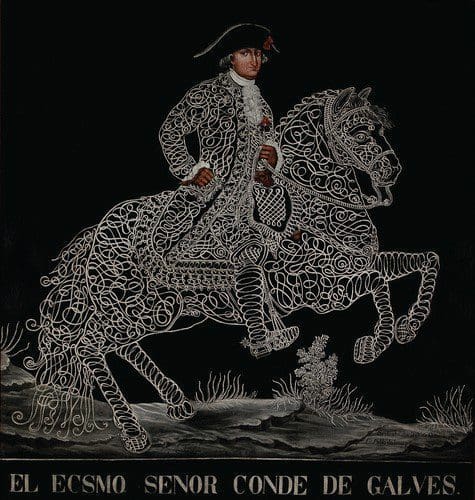Aaron Hyman, a distinguished member of our faculty, argues in the latest issue of West 86th: A Journal of Decorative Arts, Design History, and Material Culture (30, no. 1 (2023): 29–49) that information previously unexplored helps us understand a portrait of a Spanish leader Bernardo de Gálvez, composed of unique calligraphic loops and lines that make up the image.

The essay suggests that understanding the history of writing is crucial for appreciating the perspectives of artists and their audiences in the past. In his analysis, he demonstrates that this portrait was a political statement, showing respect to the Spanish king and supporting the renewal of Spanish culture. Furthermore, his argument points to the potential for including the history of writing within the broader discipline of art history.
This emerges from work related to his current book project tentatively entitled Formalities: On the Visual Potential of Script in Art of the Early Modern Spanish World.
